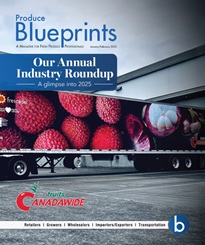According to Phil Lempert, Trader Joe’s Company, BB #:162286 Monrovia, CA, is also known for its “foragers”—a network of buyers across the country who look for unique products.
When they find something, Lempert, retail consultant for Supermarketguru.com in Santa Monica, CA, says “they’ll write a check on the spot and make a deal”—so Trader Joe’s can offer customers what others can’t—from unusual produce items to specialty wines (which have been part of the lineup since day one).
Richard Ziff, commodity manager for Shapiro-Gilman-Shandler Company, BB #:113670 a distributor and importer in Los Angeles, CA, considers this “hands-on” approach by buyers as a chief difference between Trader Joe’s and other grocers.
He also says the company’s centralized buying could see a few hiccups in the future, given the need for expanded distribution to augment cross-country growth.
Another striking difference between Trader Joe’s and other retailers is not including terminal markets in its supply chain. Instead, it is loyal to individual suppliers who fulfill the company’s specialty items and patented varieties, such as the Opal and Kiku apples the stores carry.
The way produce is sold in the store is different too: it’s never by the pound, with the philosophy that customers should know immediately what they’ll be charged for a product.
Ziff sums up the company’s strategy with three points: “limited assortment, everyday low prices, and everything sold by package or individually—nothing by the pound.” Better yet, he notes, Trader Joe’s also differentiates itself with many value-added and organic products.
When it comes to organics, Ziff is on target: 32 percent of Trader Joe’s shelf space is devoted to organic products, which tend to do better than their conventional counterparts.
This is a feature from the cover story of the March/April issue of Produce Blueprints Magazine. Click here to read the full issue.



